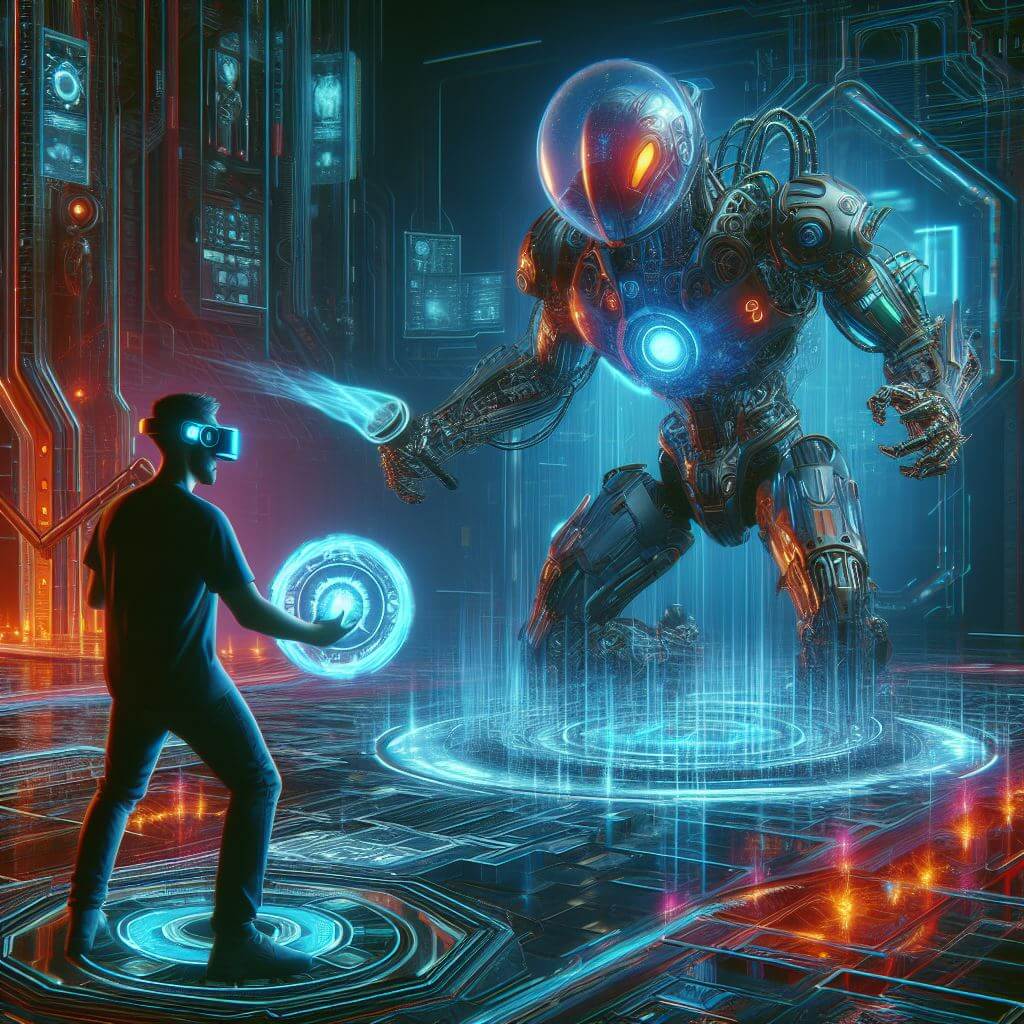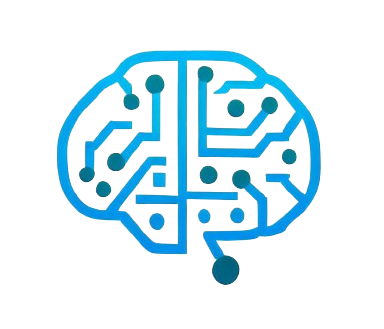The fundamentals of game theory and machine learning form a crucial point in the quest to improve the decision-making capabilities of artificial intelligence (AI) systems. Deeply rooted in economics and applied mathematics, game theory offers a solid framework for analyzing situations in which the outcome of a decision does not depend solely on human actions, but is closely related to the choices of others. This analysis covers a wide range of scenarios, including competition, cooperation, bargaining, and even conflict resolution, making it invaluable for a structured understanding of human and automated decision-making processes.
On the other hand, machine learning, a prominent offshoot of artificial intelligence, emphasizes the development of algorithms that can learn and make predictions or decisions based on data. This ability to learn from experience, adapt, and improve over time without explicitly programming for every possible scenario is what sets machine learning apart. It represents a shift from rigid rule-based decision-making systems to more flexible, data-driven approaches that can evolve.
The combination of game theory and machine learning heralds a new era in computational and cognitive sciences. By combining the predictive and adaptive capabilities of machine learning with the strategic depth of game theory, researchers are creating algorithms that can manage complex multi-agent environments with unprecedented sophistication. These environments, characterized by dynamic interactions between autonomous agents with potentially different goals, reflect much of the real world, from markets and political landscapes to social networks and ecological systems.
 Integration also solves a fundamental problem of artificial intelligence: decision-making in partially known environments or situations full of uncertainty. Game theory provides tools for modeling these uncertainties and predicting potential outcomes based on the strategic interaction of agents. At the same time, machine learning uses vast amounts of data to refine these predictions and adapt strategies in real time. This synergy not only improves the decision-making ability of AI systems but also offers a deep understanding of human decision-making, mirroring our cognitive processes of interaction-based learning and adaptation to new information.
Integration also solves a fundamental problem of artificial intelligence: decision-making in partially known environments or situations full of uncertainty. Game theory provides tools for modeling these uncertainties and predicting potential outcomes based on the strategic interaction of agents. At the same time, machine learning uses vast amounts of data to refine these predictions and adapt strategies in real time. This synergy not only improves the decision-making ability of AI systems but also offers a deep understanding of human decision-making, mirroring our cognitive processes of interaction-based learning and adaptation to new information.
Navigation To Strategic Decisions Through Integration
Navigating strategic decision-making through the integration of game theory and machine learning represents the cutting edge of computational intelligence, embodying the ability to solve complex decision-making scenarios using an analytical and data-driven approach. The combination of these two disciplines contributes to the creation of systems that can operate in environments characterized by the strategic interaction of multiple decision makers, each of whom may have their own set of goals and access to different information. This integrated approach not only greatly expands the decision-making capabilities of artificial intelligence systems, but also mimics the conditioning and foresight in human strategic thinking.
Game theory provides the structured framework needed to model multi-agent environments by delineating potential strategies and predictable outcomes based on the assumption of rationality or bounded rationality of the participants. This theoretical framework allows for the formulation of scenarios in which agents’ strategies and decisions are interdependent, resulting in a complex web of possible outcomes. From eye-for-eye exchanges in cooperative dilemmas to the complex strategies employed in competitive markets, game theory explains the underlying mechanisms that govern decision-making processes in interactive contexts.
Machine learning, with its ability to analyze huge data sets and discover patterns or strategies that may not be obvious, complements the strategic framework of game theory. By applying algorithms capable of reinforcement learning or supervised learning, machine learning allows artificial intelligence systems to adapt and evolve based on feedback from the environment. These systems study historical data, simulate potential scenarios, and refine their strategies to achieve optimal results. The powerful combination of the adaptability of machine learning with the strategic plan of game theory enables the development of decision-making processes that are both dynamic and nuanced.
This integration goes beyond mere theory, equipping AI with practical tools to make informed decisions in real-life scenarios. Whether it is optimizing resource allocation in logistics, formulating bidding strategies in auctions, navigating negotiations, or planning in military simulations, the combination of game theory and machine learning opens up new perspectives for strategic thinking and decision-making. It provides a mechanism for these systems to not only predict the actions of others but also to anticipate the ripple effects of those actions, providing a level of strategic foresight that closely mirrors human cognition.
Real-World Applications And Implications
The real-world applications and implications of the intersection between game theory and machine learning are vast and transformative, spanning many fields from economics and finance to autonomous systems and more. This integration not only revolutionizes existing processes and systems but also paves the way for innovative solutions to complex problems that were previously inaccessible. For example, in the financial sector, combining the strategic insights of game theory with the predictive capabilities of machine learning enables the creation of more sophisticated models for market forecasting, risk assessment, and algorithmic trading. Traders and financial institutions can use these advanced models to more accurately predict market movements, optimize their trading strategies, and reduce risks more effectively, leading to improved financial results.
In the field of political science and international relations, the combination of game theory and machine learning offers powerful tools for analyzing and predicting the outcomes of strategic interactions between nations, political groups, or individuals. This can inform policy and negotiation strategy, allowing for a more informed and strategic approach to diplomacy, conflict resolution, and international cooperation. By modeling different scenarios and outcomes based on historical data and current events, decision-makers can better understand potential future trajectories and make more nuanced policy decisions.
Another significant area of influence is the development and implementation of autonomous systems, including self-driving cars. Here, the integration of game theory and machine learning is critical to creating systems that can make safe and efficient decisions on the road. By understanding and anticipating the actions of other drivers and pedestrians, autonomous vehicles can manage complex traffic situations more effectively, reducing the risk of accidents and improving overall traffic flow. This opportunity extends not only to self-driving cars but also to other autonomous systems such as drones and robotic processes where strategic interaction and decision-making are critical.
In addition, the synergy between game theory and machine learning promises to improve the ethics of AI and ensure that AI systems operate in a way that is fair, transparent, and consistent with societal values. Using game theory models that consider the implications of AI decisions for various stakeholders, developers can design algorithms that not only seek to optimize a specific outcome, but also take into account ethical considerations, user impact, and societal norms.
The implications of integrating game theory with machine learning go far beyond the immediate benefits for individual industries or systems. They touch on fundamental questions about how we make decisions, interact with each other, and envision the future role of AI in society. As these technologies evolve and become more deeply embedded in our daily lives, their potential to shape economic models, social policy, ethical norms, and human-machine interaction will only grow. This integration not only opens up new horizons for technological innovation but also forces us to rethink our existing frameworks and approaches to decision-making, collaboration, and competition in an increasingly interconnected world.
